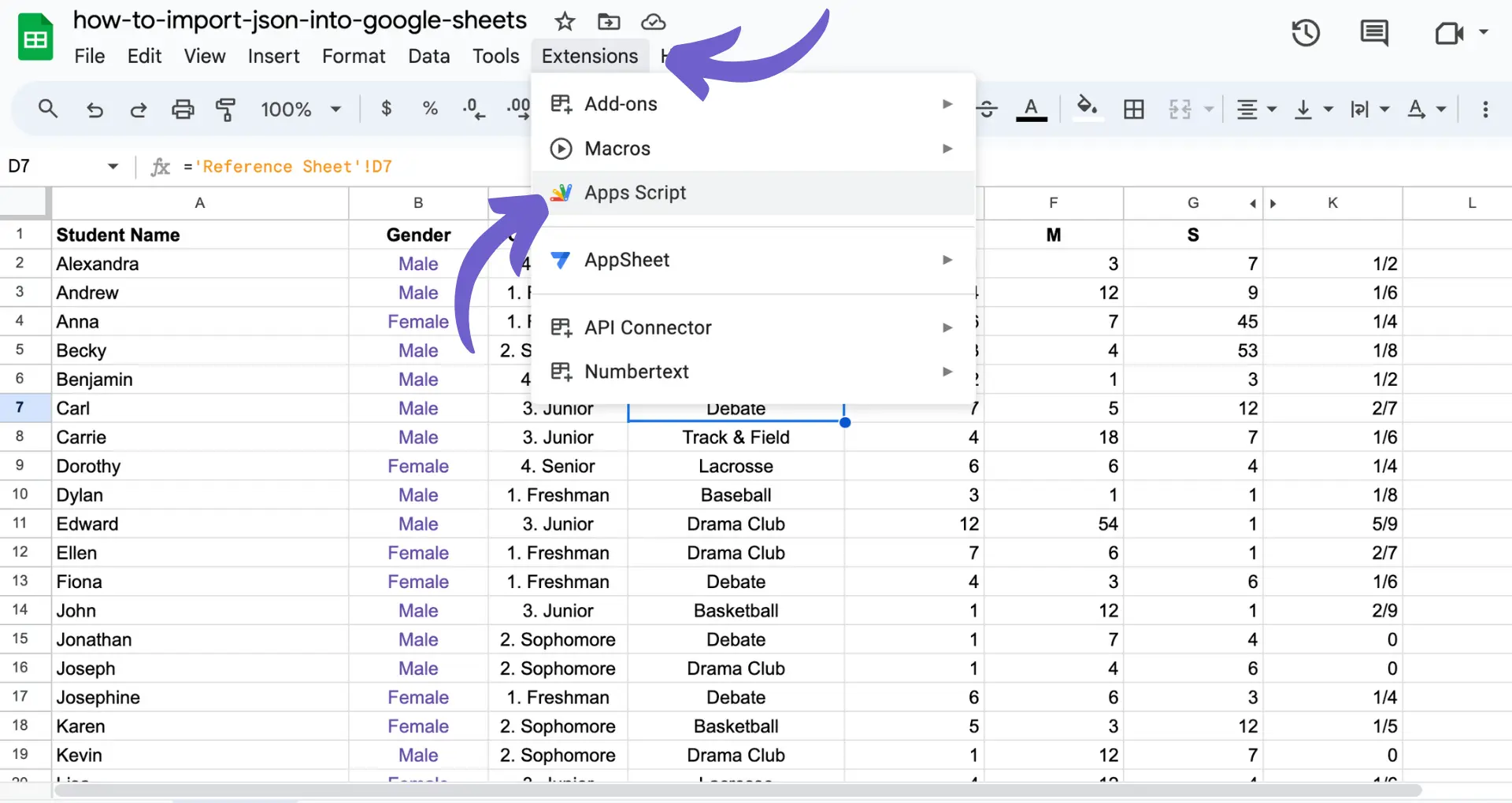Use Google Apps Script or add-ons to import JSON into Google Sheets.
By the way, we're Bardeen, we build a free AI Agent for doing repetitive tasks.
If you're automating JSON imports, you might love Bardeen's Google Sheets integration. It can save you time by automating data imports and more.
How to Import JSON into Google Sheets
Importing JSON data into Google Sheets can be accomplished through various methods, including using Google Apps Script, third-party add-ons, or external services. This guide will explore these methods to help you seamlessly integrate JSON data into your Google Sheets.
Automating the import of JSON data into Google Sheets can save you time and streamline your data analysis and reporting. Download Bardeen to discover how.
Bardeen can automate importing data from various sources directly into Google Sheets with just a single click. Try these playbooks to easily copy data into your spreadsheets:

Using Google Apps Script
Google Apps Script provides a flexible way to import JSON data into Google Sheets by writing custom functions.
- Open Google Apps Script by selecting Extensions > Apps Script from the Google Sheets menu.

2. Copy the ImportJSON script from a GitHub repository such as paulgambill's: 'https://gist.github.com/paulgambill/cacd19da95a1421d3164'.

3. Replace the default code in the Apps Script editor with the copied script and save the project.

4. Back in your Google Sheet, use the custom function =IMPORTJSON("URL") in a cell, replacing "URL" with the JSON source URL.
This method allows for customization and direct integration without external tools, but requires some basic scripting knowledge.
Bardeen can automate importing data into Google Sheets without needing to write custom functions. Save time by trying these playbooks to easily get external data into your spreadsheets:
Using Third-Party Add-ons
Third-party add-ons like ImportJSON offer a no-code solution to import JSON data into Google Sheets.
- Install the ImportJSON add-on from the Google Workspace Marketplace.
- After installation, use the =IMPORTJSON("URL") function directly in your Google Sheet, where "URL" is your JSON source.
This method is user-friendly and doesn't require programming skills. However, it may have limitations on the number of free requests and might require a subscription for extensive use.
Bardeen offers an alternative that lets you automate importing data from various sources into Google Sheets with just a click. You can set up a workflow once and re-run it anytime to get the latest data. Try these playbooks:
Using External Services
Services like Lido provide an alternative way to import JSON data into spreadsheets, including Google Sheets.
- Create a free account on the service's platform.
- Use their provided function, such as =IMPORTJSON("URL", "output_cell"), in their platform to import JSON data.
- Copy the imported data from their platform and paste it into Google Sheets.
This method can be straightforward but involves using an external service, which might not be ideal for all users.
Bardeen can automate the process of importing data from external services directly into Google Sheets, eliminating the need for manual copy-pasting. Set up a workflow to extract desired data and save it to a specified sheet and cell range. Try these playbooks:

Discover more ways to automate Google Sheets and enhance your productivity. Interested in add-ons? Learn about Google Sheets addons.
Conclusion
Whether you prefer a coding approach with Google Apps Script, the simplicity of third-party add-ons, or the flexibility of external services, there are multiple ways to import JSON into Google Sheets. Choose the method that best fits your technical comfort level and project requirements.
Automate Google Sheets with Bardeen Playbooks
Importing JSON into Google Sheets can be a manual task that requires programming knowledge or the use of third-party tools. However, with Bardeen, this process can be fully automated, saving you time and effort. Automating the import of JSON data into Google Sheets can be particularly useful for data analysis, reporting, and automating workflows. By leveraging Bardeen's playbooks, you can streamline how you collect and manage data from various sources.
Here are some examples of automations that can be built with Bardeen:
- Copy all Github issues to Google Sheets: Automatically transfer all issues from a GitHub repository into a Google Sheets spreadsheet. This playbook streamlines bug tracking and feature request management for development teams.
- Copy a newly created Asana task to Google Sheets: This playbook syncs new tasks created in Asana directly with Google Sheets, enabling seamless project management and task tracking across platforms.
- Enrich email contacts and save to Google Sheets: Enhance your email marketing efforts by enriching email contact lists with additional data and saving the enriched contacts directly to Google Sheets.
These playbooks can significantly boost your productivity by automating routine tasks, allowing you to focus on more strategic activities. Explore these and other automations by downloading the Bardeen app at Bardeen.ai/download.






.svg)
.svg)
.svg)
